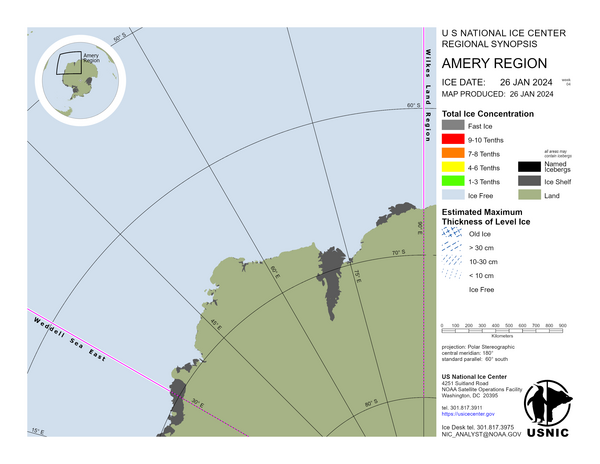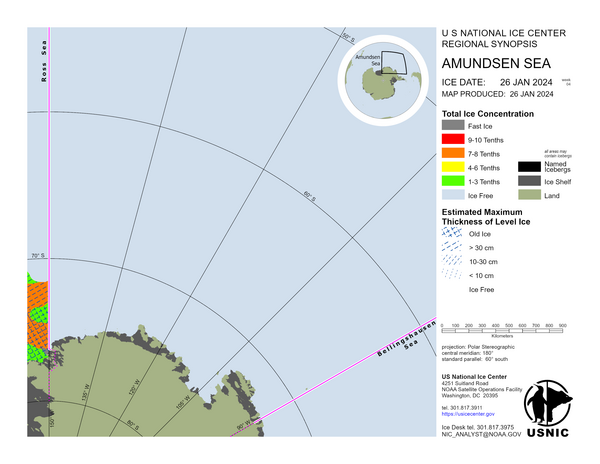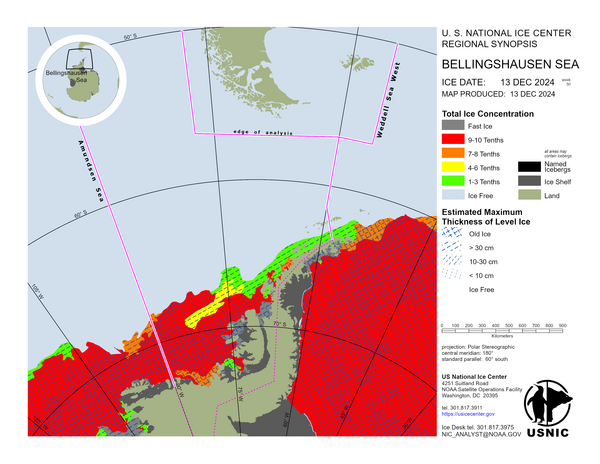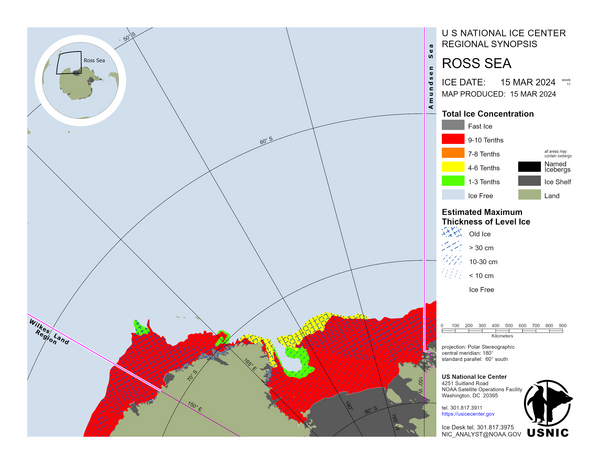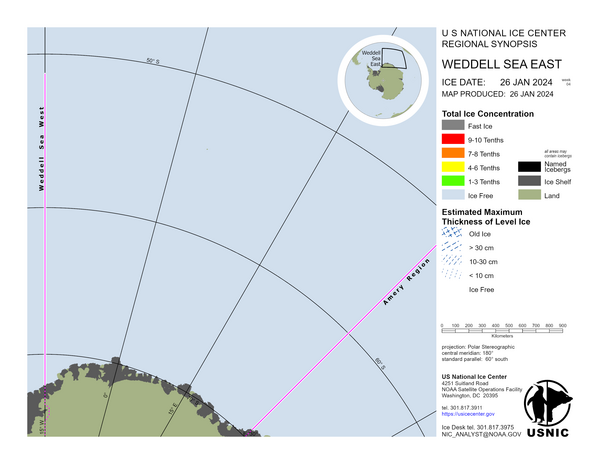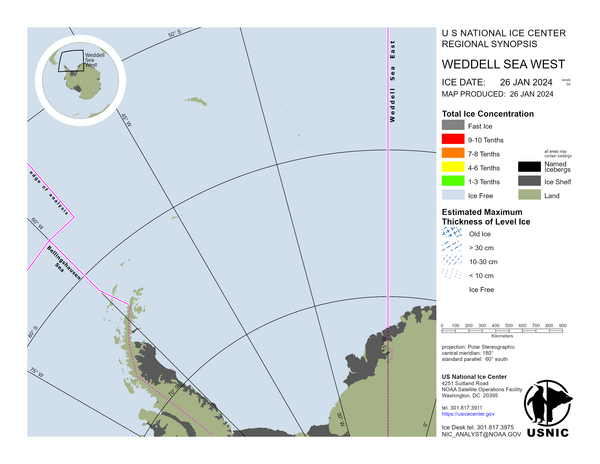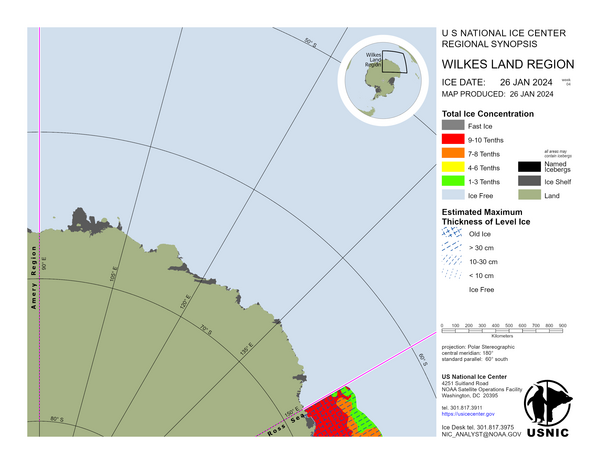Antarctic Regional Synopsis
Regional charts and associated synopsis write-up capture ice and environmental conditions throughout the Antarctic which are based on the U.S. National Ice Center’s weekly analysis. Charts and synopses are updated weekly on Fridays.
